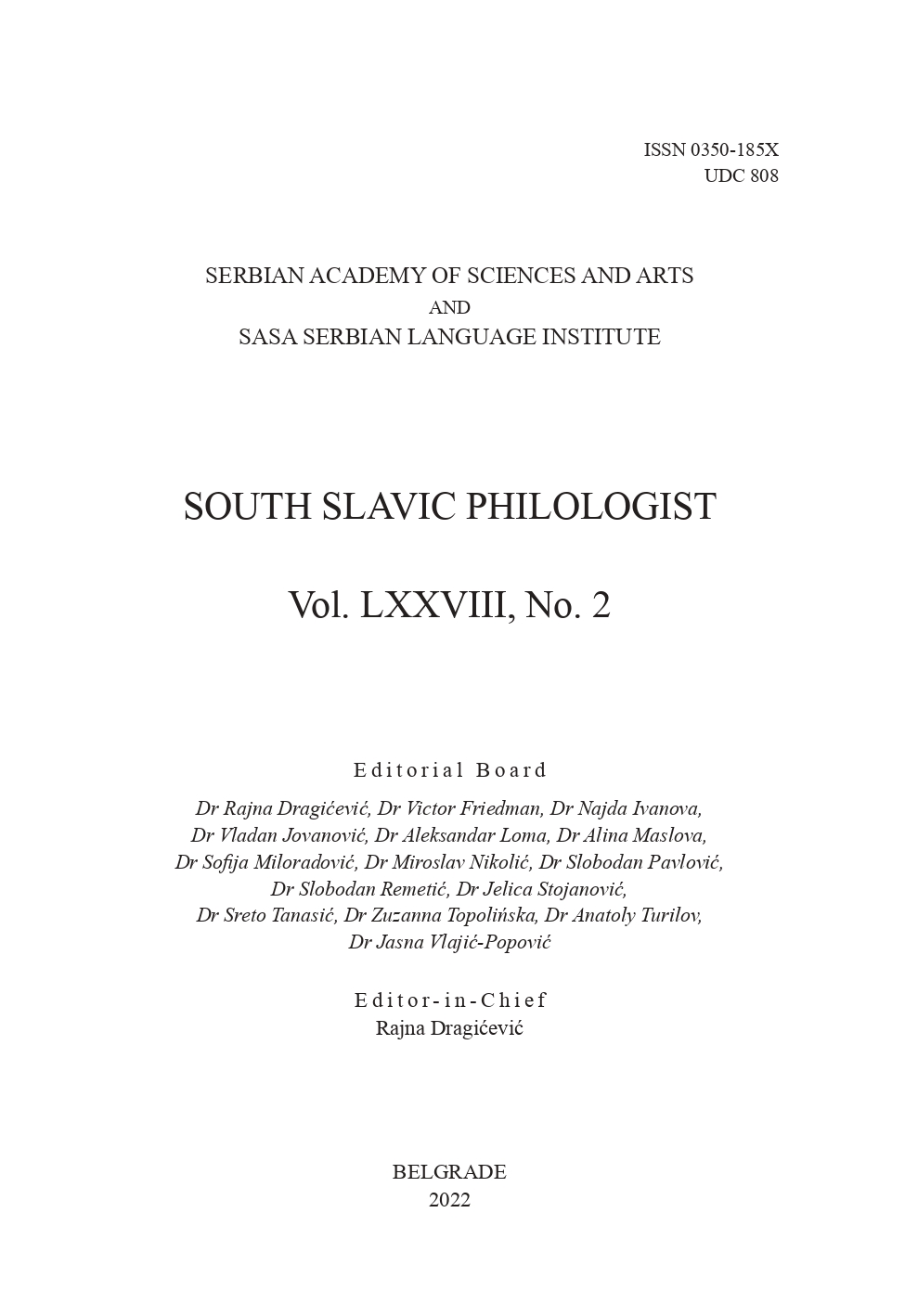ЈЕДАН ВИД КОНДЕНЗОВАЊА ВРЕМЕНСКЕ КЛАУЗЕ У СРПСКОМ ЈЕЗИКУ
ONE TYPE OF CONDENSATIO N OF THE TEMPORAL CLAUSE IN THE SERBIAN LANGUAGE
Author(s): Ivana Antonić Subject(s): Syntax, Semantics, South Slavic Languages
Published by: Институт за српски језик Српске академије наука и уметности
Keywords: linguistics; Serbian language; syntax; syntactic semantics; semantics; temporal clause; condensation; reduction; KAO
Summary/Abstract: The paper discusses the syntactic-semantic and contextual features of a nonpredicate formal structure as an exponent of the basic temporal clause. It is a type of condensation of an extensive (developed) dependent sentence form that has no features of either nominalization or verbid processes of summarizing sentence formal structures, i.e. their propositions. It is a form of reduction, as a special type of condensation process in which certain elements of the basic sentence are omitted ‒ as a rule, the predicate constituent or its verb elements as carriers of grammatical data, so it is represented by the primary noun NN, which is in neither derivational nor semantic connection with the verb, and, in this case, in the syntactic connection with the formant KAO. This structure is identical in its formal characteristics to the comparative syntagm, which can develop into a comparative clause with a factual (KAO ŠTO) or counterfactual (KAO DA) conjunction, but differs signifi cantly from it, since it is realized under different lexical and grammatical conditions ‒ the formant KAO is not an exponent of a complex comparative conjunction, but corresponds to the temporal conjunction KADA (more often) or DOK (much less often). By applying the substitution metalanguage test on typical examples, as well as on the corpus of original linguistic material, the conditions are defi ned: lexical, syntactic-semantic and contextual, under which the structure KAO NN represents an exponent of the basic developed temporal clause (for example: AS a child, he was mischievous [→ WHEN he was a child, he was mischievous]). The analysis showed that the following are responsible for the temporal meaning of this structure: (1) the semantics of the noun NN (nouns denoting the age / period of life, or professional or temporary social status of the animate entity are considered); (2) the relationship between the noun in the structure KAO NN (NN1) and the noun (NN2) in the function of the subject of the matrix sentence / subject of the developed temporal clause, which are identical, and although in appearance NN1 and NN2 are two different nouns, they have the same referent), as well as (3) the identity of the case form of both nouns (most often it is the nominative case in the structure KAO NN1, i.e. as the part of the predicate of temporal clause, and as the subject NN2 in the sentence and in the clause); (4) temporal framework: in terms of relative time, only the relationship of simultaneity (complete or partial) is considered, and in terms of absolute time, the sphere of the past is dominant and rarely and only under certain lexical conditions, the sphere of the future, but the sphere of the present is excluded (both referential and non-referential); (5) positioning: although all three possible positions are available to this structure, preposition in relation to the matrix sentence predominates, and in certain cases it is obligatory.
Journal: Јужнословенски филолог
- Issue Year: 78/2022
- Issue No: 2
- Page Range: 577-596
- Page Count: 20
- Language: Serbian

